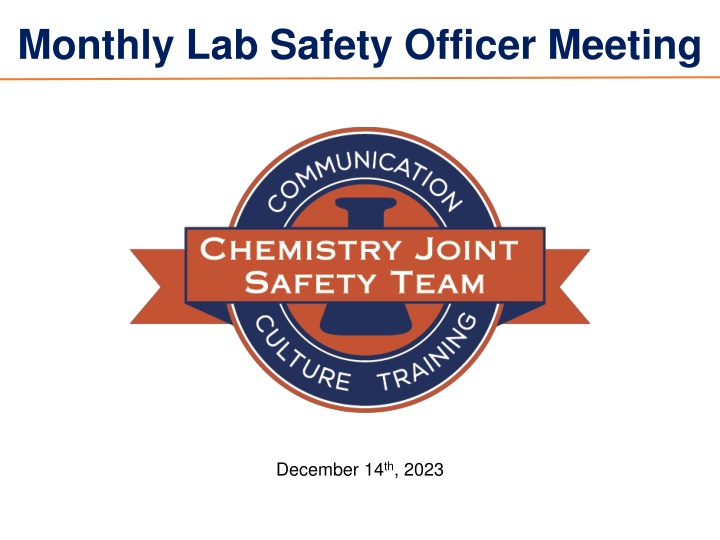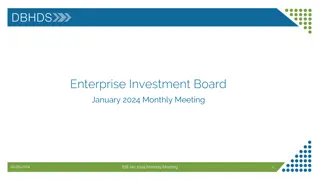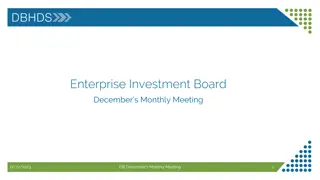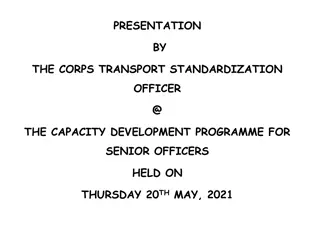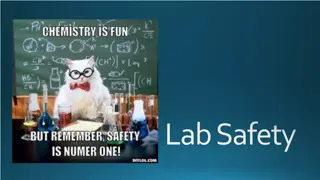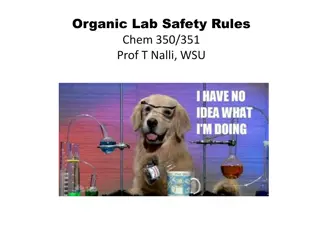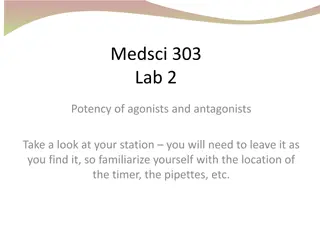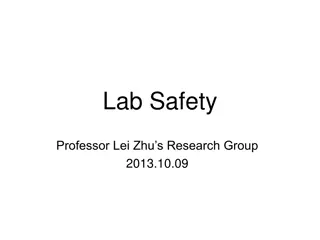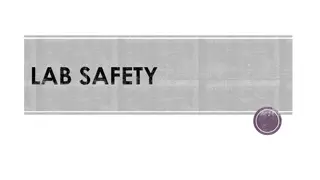Monthly Lab Safety Officer Meeting Highlights
The Monthly Lab Safety Officer Meeting held on December 14th, 2023 covered various topics such as announcements, open discussions on facility issues, safety minutes on disposal of unknown waste, and more. Safety protocols and procedures were emphasized for handling unlabeled chemicals in the lab, including testing for water reactivity and pH levels. Stay informed on key safety measures for lab environments.
Uploaded on Apr 09, 2025 | 0 Views
Download Presentation

Please find below an Image/Link to download the presentation.
The content on the website is provided AS IS for your information and personal use only. It may not be sold, licensed, or shared on other websites without obtaining consent from the author.If you encounter any issues during the download, it is possible that the publisher has removed the file from their server.
You are allowed to download the files provided on this website for personal or commercial use, subject to the condition that they are used lawfully. All files are the property of their respective owners.
The content on the website is provided AS IS for your information and personal use only. It may not be sold, licensed, or shared on other websites without obtaining consent from the author.
E N D
Presentation Transcript
Monthly Lab Safety Officer Meeting December 14th, 2023
Agenda 1. Announcements a) Change of LSO Form https://forms.gle/BsQQuzsK5F7c3kqq6 b) Anonymous Near Misses and Incidents Form https://forms.gle/88wVJ8gHXFoMqBtw5 2. Open Discussion a) Facilities Issues/Updates 3. Recent Near Miss/Incident Reports a) None submitted this month 4. Safety Minute a) Disposal of unknown waste 5. Polls a) b) Unwanted chemicals collection LSO Meeting format for 2024 2
Open Discussion Any Facilities Issues or Updates? Safety concerns or comments? Suggestions for future meeting topics? 3
Safety Minute: Disposal of Unknown Waste If you notice an unlabeled chemical container in your lab Ask the person who generated the substance to identify it. If the person who generated the substance is not reachable, consult with your PI/supervisor and other researchers in the lab to help identify the chemical or determine what type of chemical it may be. Consider the place in lab where it was found and dates if listed. Determine what type of work may have been done in that place/time. Try to eliminate certain chemical types 4 https://drs.illinois.edu/Page/Waste/CommonWasteTypes
Safety Minute: Disposal of Unknown Waste If further information on the unknown waste cannot be acquired, perform characterization tests on the waste. Note the specific description and UI# in the waste pickup request and waste tag. To perform these tests, bring the unlabeled container into a functioning fume hood and perform the tests with as small an amount of the chemical as possible. 5 https://drs.illinois.edu/Page/Waste/CommonWasteTypes
Safety Minute: Disposal of Unknown Waste Water reactivity testing For unknown liquid: Add a small amount of the unknown liquid to a new test tube. Allow one drop of DI water to slowly flow down the inside of the test tube into the unknown liquid. Any endo- or exothermic reactions are considered positive for water reactivity. For unknown solid: Use a spatula to place a small amount of the material as possible onto a watch glass. Place one drop of water onto the side of the watch glass and allow it to touch the unknown solid. Any endo- or exothermic reactions are considered positive for water reactivity. 6 Information and pictures adapted from https://ehs.msu.edu/waste/unknowns.html
Safety Minute: Disposal of Unknown Waste pH testing For unknown liquid: Dip the pH paper into the unknown liquid and match the resulting color with the color on the pH paper chart. For unknown solid: If the solid was found to not be water reactive, put a small amount of the solid onto a watch glass with a sizeable amount of DI water to dissolve or wet the solid. Dip the pH paper into the solution and determine the pH value. 7 Information and pictures adapted from https://ehs.msu.edu/waste/unknowns.html
Safety Minute: Disposal of Unknown Waste Flammability testing For unknown liquid: Dip a cotton swab into the unknown liquid and pass it through the flame of a Bunsen burner. For unknown solid: If the solid was found to not be water reactive, wet a cotton swab with DI water and wipe the cotton swab on the solid to coat the swab. Pass the swab through the flame of a Bunsen burner. Positive Negative Do not use Bunsen burner outside of a fume hood or near flammable chemicals. 8 Information and pictures adapted from https://ehs.msu.edu/waste/unknowns.html
Safety Minute: Disposal of Unknown Waste Notes on more extreme unknown waste disposal cases: Contact DRS if the chemical container is swollen, damaged, compromised, or shows visible evidence of crystal growth which may be a sign of peroxide formation. For questions regarding unknown waste disposal, email DRS-waste@illinois.edu. DRS provides consultations and guidance for disposing of large numbers of unknown chemicals by bulking. To request a consult, email DRS-waste@illinois.edu and describe what needs to be disposed. Pictures are helpful in gauging the scope of the job. 9
Safety Minute: Disposal of Unknown Waste Preventing unknown waste accumulation Many unknown chemicals are generated due to a lack of good housekeeping and good laboratory safety practices. Unknown and unlabeled chemicals can be prevented by: Labeling all containers (including beakers and test tubes) properly when creating them, even if they are temporary. Require all reaction mixtures stored in lab glassware to be labeled with chemical composition (full chemical names, not abbreviations, chemical structures, or formulas), the date they were formed, and the name of the lab worker responsible. Inspecting containers and labels in the lab inventory periodically and replacing fading or deteriorating labels that are not legible. Archived research samples are often stored in boxes containing hundreds of small vials. Label the outside of the box with the chemical constituents, paying special attention to regulated materials such as radioactives, solvents, heavy metals, and other toxic materials. If the samples are nonhazardous, label them as such. Maintaining an accurate chemical inventory list. Require all workers to properly identify any unknown materials before they leave the area or lab. Submit frequent waste pick up request forms to reduce the amount of hazards in your laboratory to reduce risk and create more lab space. 10 List adapted from https://ehs.msu.edu/waste/unknowns.html
Poll 1: Unwanted chemicals collection Does your lab have chemicals in their original vendor containers that you would like to get rid of? 11
Poll 2: LSO Meeting Format for 2024 Would you like LSO Meetings to be virtual or in-person next semester? 12
Thank you for coming! Please forward LSO meeting recap email/slides to your group! We can stay for a few minutes if there are further questions. We are taking attendance based on the participant list! No need to sign in. 13
